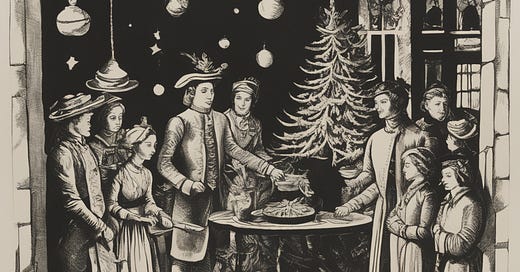Egg Nogging (with Recipe!)
how an American twist on a medieval recipe created a holiday classic drink
This article is part of the Dish-Covery series, where we uncover the stories behind your beloved flavors. Pulling back the curtain to look at culinary traditions that shape our modern palates.
From Medieval Possets to Modern Eggnog
While may we think of a seasonal glass of eggnog as an “Olde Tyme” Christmas drink, the reality is that the creamy, rich, egg-laden concoction is essentially an innovation on an older festive drink of British origins - the posset - that was drunk at weddings rather than strictly as a holiday drink. The story of how eggnog came to be… well, nog… is as American as apple pie.

Possets, the Eggnog Prototype
Medieval possets is best described as a hot, milky drink served slightly curdled with sweet wine (called sack) or ale, and sweetened and spiced.
In the later Middle Ages, possets gained popularity as a warming beverage, surviving until the nineteenth century. Comprising hot milk, beer, sherry, sugar, and spices, possets were favored for combating the cold in the pre-central heating era. The term's origin remains uncertain, with a potential link to the Latin word "posca" suggested.
According to Sasha Handley, Professor at the University of Manchester, the posset was well-regarded as more than just a healthful beverage, but a festive one too to be served at English nuptials. Cream and sherry were ingredients of wealth and status, and eggs suggested fertility and new life. All combined, the drink was a potent one with which to toast to a couple’s prosperity and good health.
As colonists came to North American shores in the 1700s, so too came a great number of recipes and culinary traditions but possets faced a unique culinary twist that came to be broadly known as eggnog or egg nog.
Eggnog, the Drink of Holiday Bounty
Early colonial farms are practically a monument to European-style agriculture, relying on cows and chickens to provide a steady stream of cream and eggs - which often led to surplus. This American bounty lent itself to several other innovations of traditional European foods, such as fruit pies in which crusts became softer, sweeter, and easier to eat than the stiffer doughs found with British coffin pies.
Keep reading with a 7-day free trial
Subscribe to As We Eat to keep reading this post and get 7 days of free access to the full post archives.










